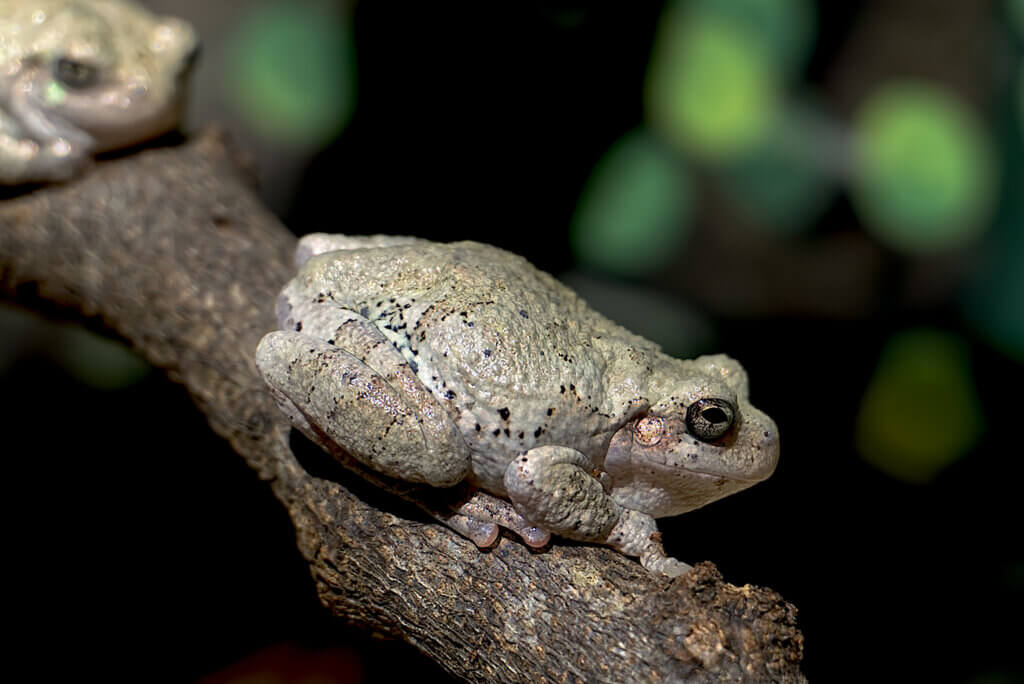Overview
“Where I live”
As their name suggests, Cope’s tree frogs are arboreal (tree dwellers), and can be found in a range of habitat types including woodlands, grasslands, prairies, meadows, fields, and swamps.
“How I live there”
The coloring of Cope’s tree frogs help them blend in with tree bark as they cling to trees with large, sticky toe pads. While they may spend time hiding in tree holes, under bark, under leaves, or under tree roots when they are not active, this camouflage also allows them to hide in plain sight!
As a defense, these frogs produce a toxic skin secretion that can cause inflammation and burning to the mucus membranes of a would-be predator. The secretions might also serve an antimicrobial function for the frog itself as a defense against parasites and bacterial infections.
“Making my mark”
Cope’s tree frog has the ability to freeze in winter as a survival strategy. For most animals, allowing the body to freeze is fatal, because ice crystals form in the cells, ripping the cells apart. The body of a Cope’s tree frog solves this problem by producing large amounts of glycerol, a chemical that converts to glucose and then circulates through the frog’s cells. The glucose acts like a kind of antifreeze and prevents ice crystals from forming in the frog’s cells. With the cells protected from ice crystal formation, the rest of the water and blood in the frog’s body then freezes, and its heartbeat and breathing stop. When the temperatures begin to increase again, the tree frog can simply “thaw out.”
“What eats me”
Cope’s tree frog tadpoles are preyed upon by diving beetles, dragonflies, fish, and salamanders. Adults may be preyed upon by snakes, wading birds (e.g., herons), raccoons, and skunks, among others.
Raising Young
Breeding season for Cope’s tree frog lasts from March to August, but calling is most intense in the early summer. During the breeding season, males can be distinguished by the color of their throats, which are black or gray. The dark-colored throats of the male likely help camouflage them from predators as they call—a light-colored throat inflating would be much more conspicuous. Females lay as many as 2,000 eggs in groups of 10 to 40, attaching the egg masses loosely to vegetation at the surface of shallow ponds and pools. In three to seven days, the eggs hatch. At that point, the young are on their own–there is no parental care of tadpoles.
Taxonomy
- Kingdom: Animalia
- Phylum: Chordata
- Subphylum: Vertebrata
- Class: Amphibia
- Order: Anura
- Family: Hylidae
- Genera: Hyla
- Species: chrysoscelis

